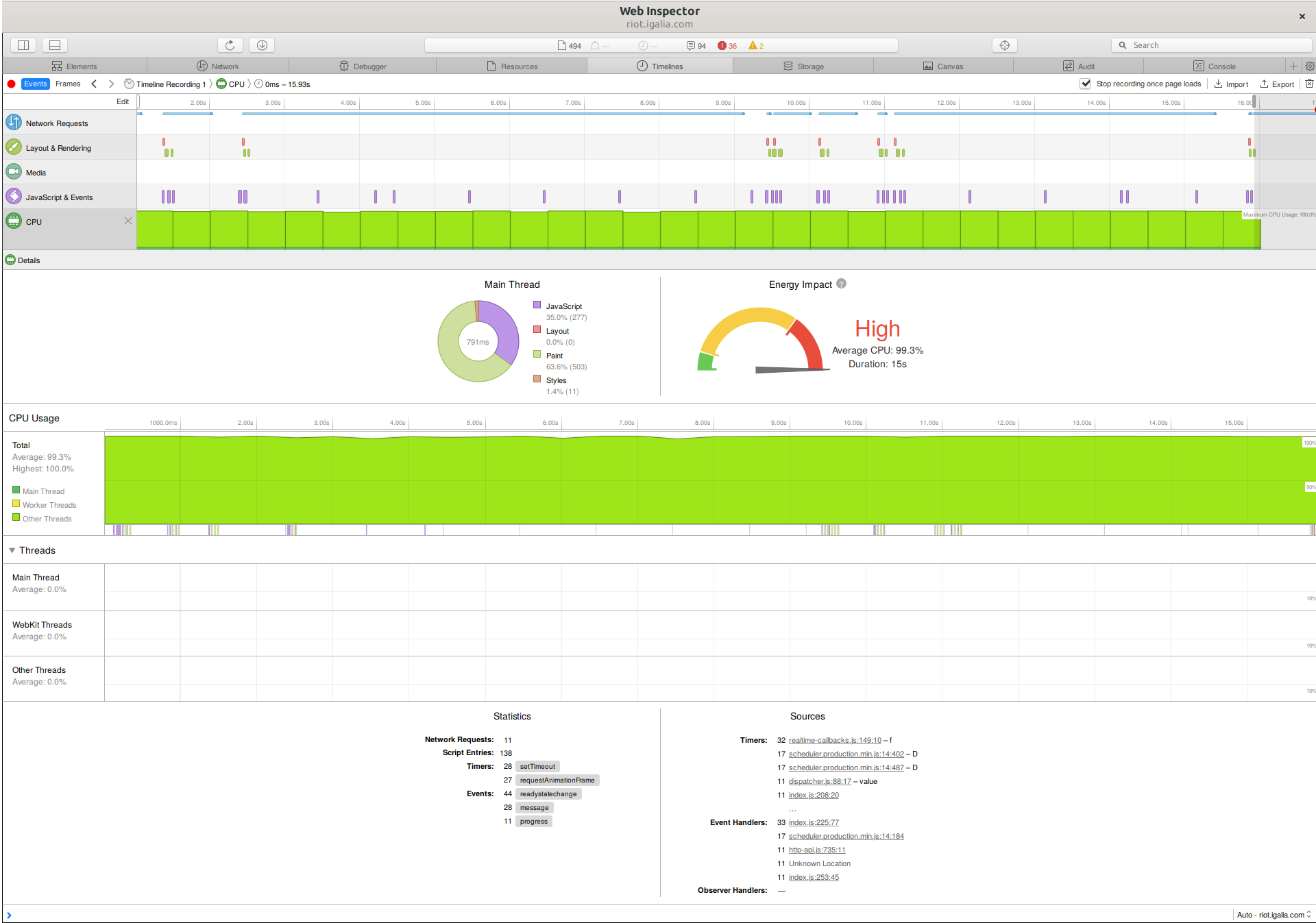On x86-64 (Debian unstable) I see 85.4g for "VIRT" in top just a few seconds after starting up, but it doesn't seem to continue to grow. My guess is something in webkit (likely the JS interpreter) allocates a large amount of virtual space to play with but doesn't actually put anything in most of it.
I don't seem to see it using a lot of CPU. I also suspend and resume, but don't change XRandR layout so perhaps that's the trigger.

Not long after starting
revolt, the associated WebKitWebProcess will consume as much CPU as it can get (fortunately it is single-threaded), and keep allocating memory. For instance, this was in thetopoutput just now, before I closed the process:So yeah, 84.6Gb of virtual memory, and 188:40.41 CPU time on a process that is just a couple of hours old.
I think this may be related to suspending/resuming, and/or XRandR layout changes (as I travel to and from office once in each direction per day), and I will update this issue as I find out more.